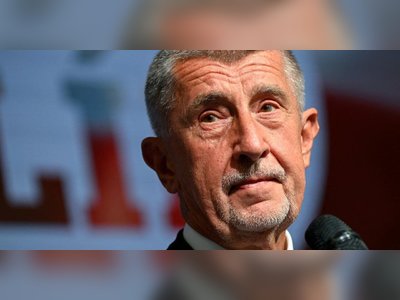Europe’s CO2 Auctions Yield €43 Billion Windfall Amidst Mounting Climate Mandates
As carbon prices soar, European nations, including the Netherlands, capitalize on emissions trading revenue to fund ambitious climate projects.
In a remarkable display of economic and environmental convergence, Europe has amassed over €43 billion in 2023 through the sale of carbon allowances, marking a significant milestone in its commitment to combating climate change.
Data from the European Environment Agency reveals that the Netherlands alone benefited to the tune of €1.3 billion from this burgeoning market, reflecting a broader trend that sees revenue soaring as carbon prices climb.
This financial influx marks the first year when EU nations are compelled to channel these funds towards climate initiatives, transitioning from earlier guidelines that merely encouraged such expenditures.
However, the specifics of how countries deploy this money remain opaque, with the Netherlands exemplifying the challenges of tracking spending due to the non-earmarking of funds.
The European Union Emissions Trading System (ETS), operational since 2005, constitutes a pivotal mechanism by which about 10,000 high-emitting companies across 30 countries are incentivized to reduce their carbon footprints; each ton of carbon emitted incurs a financial cost.
These entities collectively account for approximately half of the EU's total carbon emissions.
Significantly, out of the total revenue from carbon rights sales, €33 billion flows directly to member states, while the remainder underpins European funds dedicated to fostering innovation, such as the development of battery technology for electric vehicles and renewable hydrogen production.
Yet, despite this robust revenue stream, the allocation to international projects, such as development cooperation, remains modest, with only €100 to €200 million earmarked annually.
Most spending focuses on domestic projects, primarily in the sectors of energy, public transport, and mobility.
Germany has emerged as the largest beneficiary within the EU, netting €7.6 billion, followed by Poland, Italy, Spain, France, and the Netherlands.
Yet, the Dutch Ministry of Finance admits to a lack of clarity regarding the precise application of these funds.
The ministry concurs that Dutch budgetary rules strictly segregate income and expenditure, indicating that revenues from carbon trading are typically not designated for specific spending initiatives.
Adhering to stringent EU mandates, the Netherlands is required to match its expenditure with these significant earnings, even if supplemented by alternate financial reserves.
It is noted that in 2023, the primary recipient of the country’s climate expenditure was a subsidy pool aimed at greening residential properties.
As the EU continues to refine its approach to carbon trading and allocation, the financial windfall from CO2 rights represents a double-edged sword, simultaneously forming a crucial revenue stream for environmental investment while highlighting the perennial challenge of fiscal transparency and policy efficacy.
Data from the European Environment Agency reveals that the Netherlands alone benefited to the tune of €1.3 billion from this burgeoning market, reflecting a broader trend that sees revenue soaring as carbon prices climb.
This financial influx marks the first year when EU nations are compelled to channel these funds towards climate initiatives, transitioning from earlier guidelines that merely encouraged such expenditures.
However, the specifics of how countries deploy this money remain opaque, with the Netherlands exemplifying the challenges of tracking spending due to the non-earmarking of funds.
The European Union Emissions Trading System (ETS), operational since 2005, constitutes a pivotal mechanism by which about 10,000 high-emitting companies across 30 countries are incentivized to reduce their carbon footprints; each ton of carbon emitted incurs a financial cost.
These entities collectively account for approximately half of the EU's total carbon emissions.
Significantly, out of the total revenue from carbon rights sales, €33 billion flows directly to member states, while the remainder underpins European funds dedicated to fostering innovation, such as the development of battery technology for electric vehicles and renewable hydrogen production.
Yet, despite this robust revenue stream, the allocation to international projects, such as development cooperation, remains modest, with only €100 to €200 million earmarked annually.
Most spending focuses on domestic projects, primarily in the sectors of energy, public transport, and mobility.
Germany has emerged as the largest beneficiary within the EU, netting €7.6 billion, followed by Poland, Italy, Spain, France, and the Netherlands.
Yet, the Dutch Ministry of Finance admits to a lack of clarity regarding the precise application of these funds.
The ministry concurs that Dutch budgetary rules strictly segregate income and expenditure, indicating that revenues from carbon trading are typically not designated for specific spending initiatives.
Adhering to stringent EU mandates, the Netherlands is required to match its expenditure with these significant earnings, even if supplemented by alternate financial reserves.
It is noted that in 2023, the primary recipient of the country’s climate expenditure was a subsidy pool aimed at greening residential properties.
As the EU continues to refine its approach to carbon trading and allocation, the financial windfall from CO2 rights represents a double-edged sword, simultaneously forming a crucial revenue stream for environmental investment while highlighting the perennial challenge of fiscal transparency and policy efficacy.











